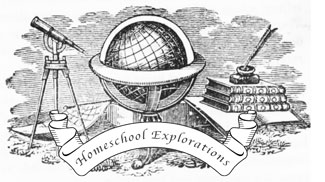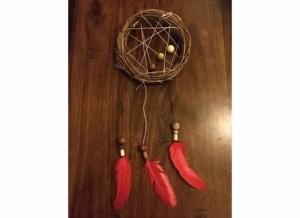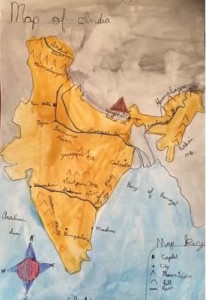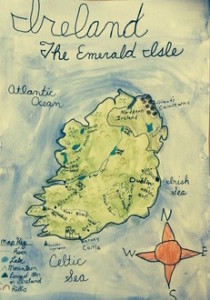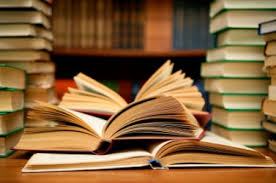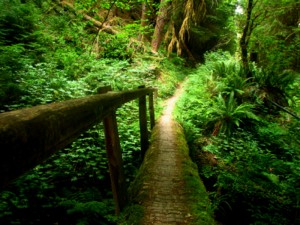Turkey Country Study
The Books:
Note: I was able to find most of these books in our local library, but some are so beautiful that they make wonderful additions to your home library. Not every book is necessary for this study, but we read all of them, one at a time, during our morning story times. Stories are a wonderful way to become familiar with a culture.
Just in case the Amazon book links didn’t load on your computer, here is a written book list:
A Treasury of Turkish Folktales for Children – Walker
The Fish Peri: A Turkish Folktale – Dewey
The Hungry Coat: A Tale from Turkey – Demi
New Patches for Old – Walker
Tales of Nasrettin Hoca – Nesin
Let’s Visit Istanbul!: Adventures of Bella and Harry – Manzione
Turkey (Country Explorers) – Donaldson
If You Were Me and Lived in Turkey – Roman
T is for Turkey – Pyper
Introduction to Turkey:
To introduce your children to the beauty of Turkey, watch the following videos with them.
Mapping Turkey:
Mapmaking is such an exciting project for children. Not only is your child learning the geography of Turkey in a much more memorable way than fill in the blank maps, but she is learning a historic art form. I find that my children truly learn and retain their geography when they create their own maps, as they are having a visual, kinesthetic, and artistic experience while learning the geography of the region. Here is how we approached mapping Turkey.
Materials: watercolor paper (we use 11 x 17) waterproof India ink pen, watercolors, colored pencils, an atlas or computer for reference maps
(Prepare a cutout in the shape of Turkey by outlining Turkey and cutting it out for your children to trace around- or they can draw Turkey freehand on their paper)
Introduction:
Begin by looking at an atlas and ask your children to locate Turkey on the world map. Make a note that it is in Asia. Then look at a map of Turkey. Notice bordering countries and name them out loud. Ask your children if they can find the capital of Turkey (Ankara).
Have your children make an outline of Turkey on their paper that includes the surrounding land. In other words, don’t make it look like an island. It is important that children know which regions border water and which border land.
Have your children outline all land with the India ink pen, as well as Turkey’s borders. They don’t need to outline other countries, unless you want them to, but have them name them orally. Then have them label Turkey. Ask your children to locate the capital city of Ankara and label it. Now have them watercolor Turkey any color they want, the surrounding land grey to show that we are not focusing on it, and the oceans blue.
Oceans, Seas, Rivers, and Lakes of Turkey:
Begin by looking at this map. Notice the main seas bordering three sides of Turkey. (The Black Sea, Aegean Sea, and Mediterranean Sea) Have your children label them on their maps in India Ink.
Click here to see a map of Turkey’s largest rivers. Have your children draw the rivers on their maps using a blue colored pencil. Then have them label the rivers.
Click here to see a map of Turkey’s lakes. The largest lakes in Turkey are Lake Van, Lake Tuz, and Lake Beysehir. Help your children find them on the map, and then have them draw them and label them on their maps.
Mountains of Turkey:
Look at this map of mountain ranges in Turkey. Find the three major mountain ranges. Have your children draw them on their maps by making little upside down V’s. Label the mountain ranges.
Then click on this link to see a map of Turkey with the largest mountain, Mount Ararat, labeled. Have your children draw and label it on their maps.
Cities:
Look at this map of some of Turkey’s main cities. Ankara and Istanbul are definitely the most famous cities in Turkey, but have your children add more cities to become familiar with the geography of Turkey.
Map Details:
Have your children add a compass rose to their maps as well as a map key. Last of all, have them title their maps, “Map of Turkey.”
Wildlife of Turkey:
Learning about the wildlife of the country you are studying is equally as important as learning about the geography and culture, as hopefully we are raising a generation that will contribute to the well being of our planet, the protection of species, and the preservation of wildlife. There is no better way to contribute to that goal than to nurture in our children, from a young age, a respect and admiration for nature and wild life.
Materials- a cutout of Turkey (same cutout used for the first map), a large piece of thick paper, (we always use watercolor paper so that these projects last), colored pencils, india ink pen, and either block crayons or watercolors.)
Begin by watching the nature of Turkey video clip below. I wasn’t able to find a full length Wildlife Documentary for Turkey, but this video is wonderful.
Now have your children outline Turkey on their paper using a dark green pencil.
Click here to learn about different mammals native to or common in Turkey. If you click on any of the species, you will be brought to a page about that species with a picture of it. Read the common names of the animals to your children, clicking on many as you go, and allow them to pick their favorites to draw on their maps. They can also draw animals they remember from the video. (If your children really don’t enjoy drawing, you can print pictures of the animals and have them cut them out and glue them.) Don’t forget to include marine mammals!
Click here to learn about the birds of Turkey. Have your children draw their favorite birds on their maps.
Click here for a comprehensive list of animals found in Turkey.
Have your children title their maps, “Wildlife of Turkey.”
Then, with watercolors or block crayons (or the side of a stick crayon) have your children color China green, the surrounding land gray or brown, and the ocean blue.
Flag of Turkey:
Materials: watercolor paper, sharpie black marker to outline, watercolors
Click here to see a flag of Turkey and to read about its meaning. Then have your children draw and watercolor their own flag of Turkey.
Religion in Turkey:
The main religion in Turkey is Islam. Islam is one of the three monotheistic world religions. Muslims believe in the same God as Jews and Christians, as well as all of the same prophets. The pillars of the Islam are as follows:
Belief in one God and that Muhammad is a messenger of God
Prayer 5 times a day
Fasting in the month of Ramadan
Giving to charity
Pilgrimage to Mecca at least once in a person’s life
To read about Islam click here.
Sufism is the mystical path of Islam. The whirling dervishes, or the Mevlevi Order (those who follow the teachings of Rumi in full), are Sufis. There are many Sufi orders (groups).
To read more about the Mevlevi Order click here.
Hand Painted Turkish Tiles:
Hand painting tiles is a traditional art in Turkey that dates back as far as the 9th century. Tiles are often painted with mesmerizing geometric patterns, floral patterns, or other nature inspired designs.
Make Your Own Turkish Tile:
Materials: Oven bake polymer clay (we use Sculpey), acrylic paints, paint brushes
- Roll your clay into a ball and then use a rolling pin to roll it flat.
- Decide if you want your tile to be a circle, square, or rectangle, and cut it into that shape using a cookie cutter, or a butter knife (with a help from an adult)
- Follow the directions on the clay box to bake the tile
- Allow the tile to cool, and then paint a design of your choice on it. Click here to see designs of Turkish tiles.
Turkish Marbling Art:
Ebru, or Turkish marbling art, is created when the artist drops varying colored paints into a liquid and manipulates the paints into patterns by moving the liquid with tools. The result is an exquisite work of art that looks like marble. Sometimes the artist will even create pictures on top of the marble art or use it as a background for calligraphy.
Make Your Own Piece of Turkish Marbling Art:
Begin by watching the video below. Then click on the link for directions to make your own marbling art. We had so much fun doing this!
Make a Traditional Turkish Mosaic Lantern:
Turkish mosaic lamps have been a traditional art in Turkey for over five hundred years. They were used in the Ottoman Empire by royalty and nobility.
Materials: Glass candle holder (we found ours at Michael’s for under $2.00), tissue paper, glue stick or hot glue, glass mosaic pieces (there are many different types ranging from $1.50 for a small bag, to $7), candles
If your children are old enough to use hot glue, they can glue their mosaic pieces directly on to the glass. Have them first create their design on the table, and then they can glue their pieces onto their lantern.
If your child is not old enough to use hot glue, then first cover your glass jar with glue stick glue and wrap it with a layer of tissue. This helps the mosaic pieces the stay put when glued. Otherwise, they slip right off the glass. After they have glued the tissue layer, they can go ahead and cover a section of their jar with a thick layer of glue, and then put their mosaic pieces in place. Again, have them create their design first on the table and then transfer it to their jars. A simple flower design is easy. If you have diamond or square shaped pieces, stars might be an interesting pattern.
The Whirling Dervishes or Mevlevi Sufis:
The whirling dervishes, as they are most famously known, are a group of Sufis (followers of the mystical path of Islam) that follow the teachings of Rumi, the famous Sufi/ Muslim poet and saint. Although Rumi was born in what is now Afghanistan, he lived and died in what is now Turkey.
The whirling is a form of dhikr, which is a traditional practice in Sufism that translates to remembrance (of God). It can be thought of as a meditation. The chanting and music are also an intrinsic part of the dhikr (pronounced thikr). The practice of the whirling dervishes originated in Turkey, and the ceremony is called a sema.
Whirling Dervish Art:
Materials: Watercolors, watercolor paper, brush, black ink or paint
If your children enjoyed watching the sema, they might want to make a simple silhouette painting of a whirling dervish. Simply have them paint their paper a solid blue, or any other color they would like for their background. Then, they can paint a small head, a vertical rectangle for the body, a curved shape like this ( ~ ) for the arms, and the long skirt. They may want to include a silhouette of a mosque in the background. The simpler it is, the more beautiful.
Cook a Traditional Turkish Dinner:
Cooking day is absolutely my children’s favorite country study activity. For our traditional Turkish meal we prepared lamb kebabs, rice pilaf, and veggies. We played beautiful traditional Turkish music while cooking and enjoyed ourselves immensely. The meal was delicious and, like many of the other meals we have made for our country studies, will now be a regular meal in our dinner rotations.
For the lamb kebab recipe, click here.
For the rice pilaf recipe, click here.
Add some sliced cucumbers, tomatoes, parsley, and pita and enjoy!
Featured Country Studies
Featured Blog Posts
What This Site Offers and Will Offer:
HOME COUNTRY STUDIES:
On our Country Study Pages you will find month long, complete geography and culture curriculums for selected countries. For each individual country study, you will find a booklist, an introduction to the country and the beauty of the region, mapmaking projects, projects based on traditional folktales, projects based on the traditional clothing of the region, recipes for cooking traditional meals, art projects, links to become familiar with the traditional music and dance of that country, and more.
NATURE STUDY:
By clicking on our “Explore Nature” tab you will find an ever growing wealth of resources to help you make nature study a wonderful and intrinsic part of your homeschool. From wildlife sketching video tutorials from John Muir Laws, to activities to get your children out and excited about nature, to wonderful products to help you educate your children about natural history. This section of our site will be replete with ideas to help you educate your children about nature, as well as give them the opportunity to create a life long bond with nature.
BLOG:
Please keep up with our blog! Topics will range from all things homeschooling, to topics of interest to mothers and family life, as well as much more!
COMING SOON!!
EXPLORE LITERATURE
Very soon I will have an “Explore Literature” tab on the menu. This section of the site will include booklists for various ages, as well as wonderful literature for mothers. Literature and reading are cornerstones of our homeschooling, as well as my life personally, and I hope to share with you the titles that have brought wonder, joy, empathy, ethics, and adventure into our lives.
COMING SOON!!
TRAVEL ADVENTURE PAGES
Next year I will begin creating travel adventure pages. These pages will offer full educational travel itineraries for various countries to help you create the educational trip of a lifetime. In each region, accommodations, historic sites, museums, historic re-enactments, cultural activities, and nature sites will be highlighted. There is nothing that compares to real life learning, and traveling is an amazing way to experience that.
